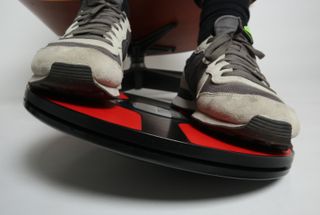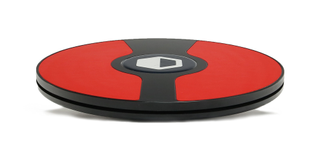3DRudder's Foot-Controlled VR Input Device Goes Wireless

3DRudder is ready to move on to the next phase of hardware development. With the wired version of the 3DRudder launched, the company is focusing its energy back towards the mobile market. At CES 2017, 3DRudder unveiled 3DRudder Wireless, a completely untethered VR input device with mobile and PC compatibility.
3DRudder has a history with CES. Three years ago, 3DRudder showed us an early prototype of the device. The following year, 3DRudder was back with it’s nearly completed foot controller design. Keeping with tradition, 3DRudder is back for CES 2017 to reveal its latest improvement.
3DRudder began shipping developer kits to early adopters in May 2016, and a little over a month later, the company announced Gear VR support for the peripheral. Unfortunately for 3DRudder, the announcement was premature. Less than two weeks later, 3DRudder discovered that the USB port on the retail Gear VR doesn’t support data passthrough, which meant the first generation 3DRudder wouldn’t work with Gear VR after all. 3DRudder’s engineers built the compatibility for Gear VR using the Innovator Edition, which does support data over USB. The company issued an apology about the mix-up and quickly retracted its claim of mobile compatibility.
3DRudder put effort into writing software to help reconfigure the peripheral’s firmware programming to emulate the axis profile need for mobile devices. We know this because we had a copy for our 3DRudder review. Fortunately, that effort wasn’t a complete waste for the company, because it was already working on a wireless edition that's designed to work with mobile devices.

The wireless edition of the 3DRudder offers everything that the wired version does, as well as an internal 5v battery, which provides up to 12 hours of untethered use.
3DRudder Wireless works with Windows PCs alongside the Oculus Rift or HTC Vive VR HMDs, just like the wired version. It also adds support for mobile devices such as Samsung’s Galaxy phones and Daydream-ready Android phones, via Bluetooth connectivity. Bluetooth connectivity also allows 3DRudder to work with other Android-based VR devices, such as the various Cardboard options that are available.
The 3DRudder Wireless isn’t available yet, but it’s coming this year; the company plans to release it over the summer of 2017. Surprisingly, the wireless version isn’t much more expensive. The original 3DRudder sells for $179, and 3DRudder is targeting $199 for the wireless version.
Stay on the Cutting Edge
Join the experts who read Tom's Hardware for the inside track on enthusiast PC tech news — and have for over 25 years. We'll send breaking news and in-depth reviews of CPUs, GPUs, AI, maker hardware and more straight to your inbox.
Kevin Carbotte is a contributing writer for Tom's Hardware who primarily covers VR and AR hardware. He has been writing for us for more than four years.
Most Popular


